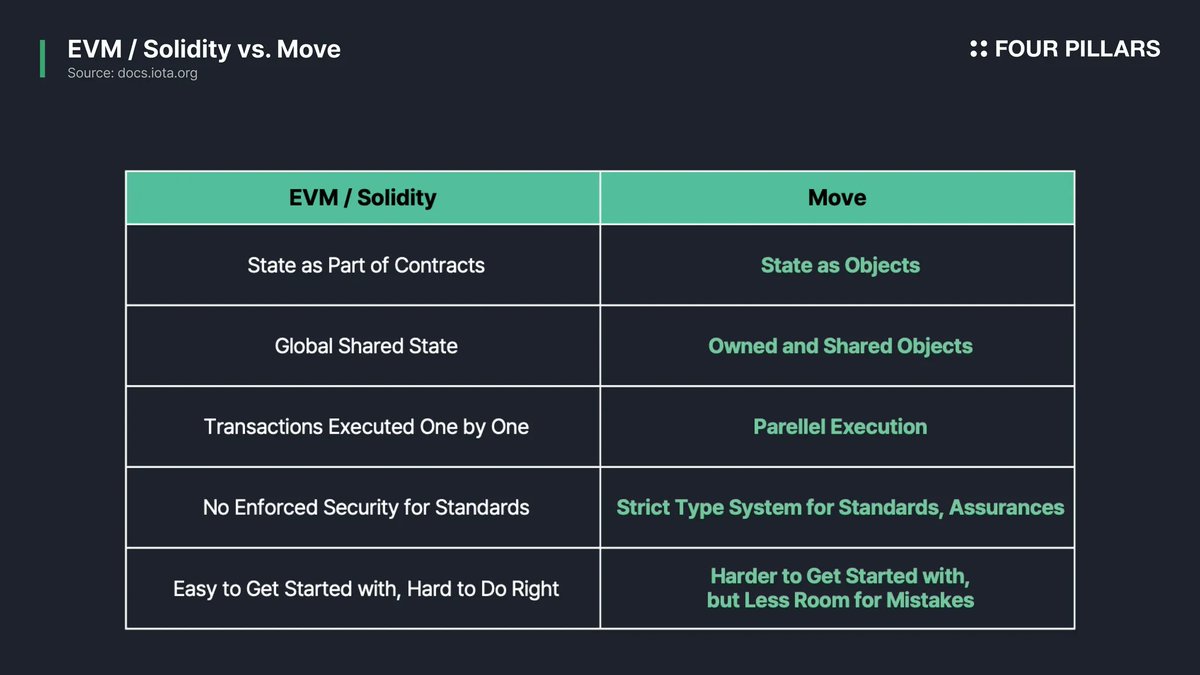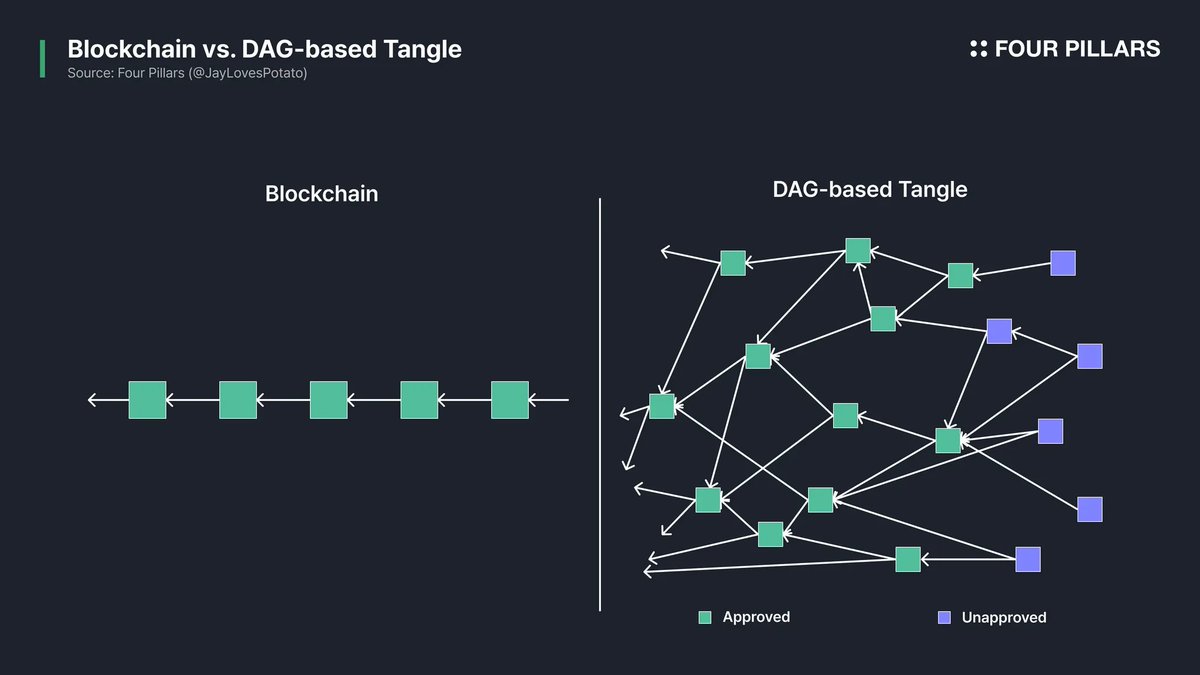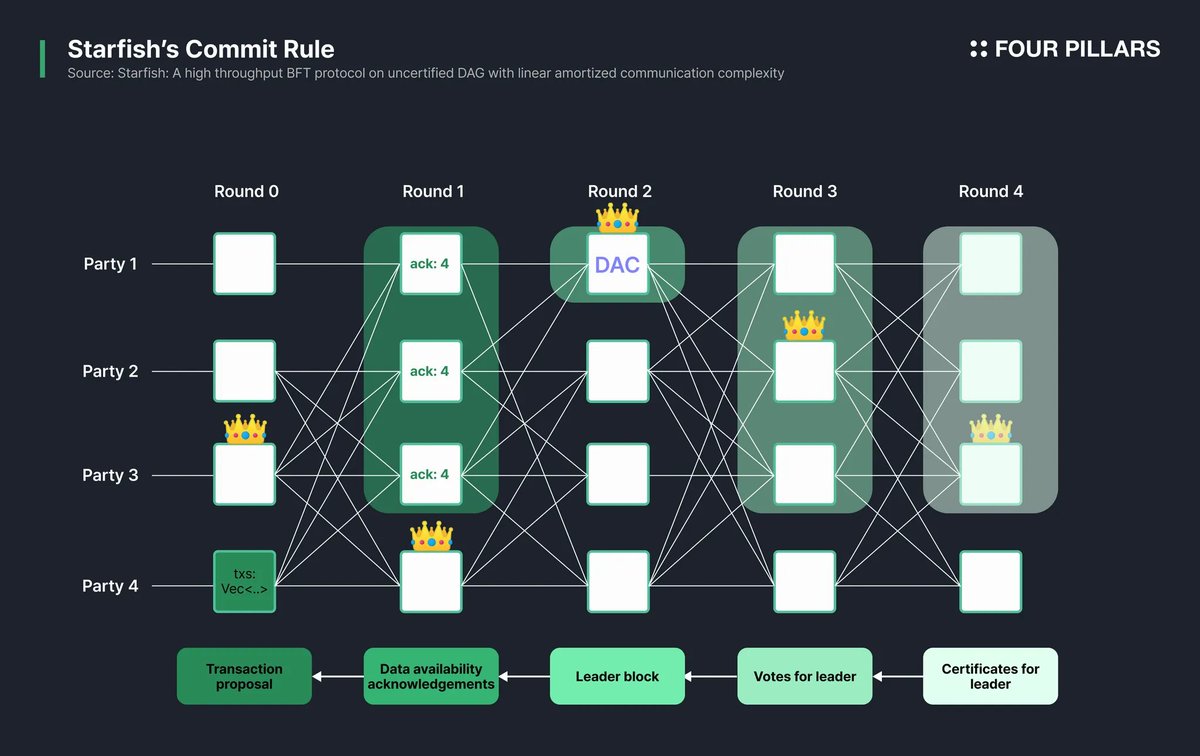:: Why Did IOTA Choose Sui’s Infrastructure for IOTA Rebased?
One of the most notable trends in blockchain infrastructure this year has been the rise of @SuiNetwork 's MOVE-based stack. While a variety of programming languages and VMs continue to evolve in parallel, @SuiNetwork stands out for its flexible asset representation, rich interaction capabilities, and impressive performance at scale.
At the core of this are two key innovations: 1) the resource-oriented MOVE programming language and 2) the DAG-based BFT consensus engine, Mysticeti.
MOVE was developed by former Meta engineers—including @Mysten_Labs co-founder @b1ackd0g —to define assets as resources that cannot be duplicated or discarded. This approach ensures safe state management. With its object-based state model, MOVE on Sui enables parallel transaction execution, which results in high throughput and low fees.
To ensure that these MOVE-defined assets operate reliably across the network, @SuiNetwork employs a DAG-based consensus mechanism called Mysticeti. Unlike traditional BFT protocols such as Tendermint or HotStuff, which often suffer from consensus delays due to leader dependence, Mysticeti addresses this bottleneck with a more flexible architecture—dramatically improving performance and scalability while maintaining decentralization and robust security.
As @SuiNetwork 's infrastructure continues to gain recognition as a next-generation smart contract platform, some projects have begun adopting its technology stack early to reshape their ecosystems—and @iota stands out as a leading example of this trend.
From Feeless DAG Network to Smart Contract Platform
Launched in 2016, @iota had consistently pursued its vision of a feeless value exchange network built on a unique DAG-based consensus mechanism.
However, the @iota team recognized that in order to support a broader range of use cases and drive mainstream adoption, they needed to introduce smart contracts—enabling more flexible asset representation and richer functionality.
With this in mind, the team began developing an EVM-compatible Layer 2 in 2022, and soon after, embarked on a more fundamental transformation: 'IOTA Rebased'—a full Layer 1 rebasing with Sui’s advanced infrastructure stack.
Starfish: IOTA’s Take on Consensus
While @iota has adopted much of @SuiNetwork 's infrastructure, it’s also tailoring it for its own needs. A key part of this is Starfish, a consensus engine designed to balance the strong security of certified DAGs with the performance efficiency of uncertified DAGs.
Starfish introduces a structure that allows transaction block availability to be verified over time, minimizing the risk of data omission or concealment by malicious nodes.
In short, while it makes some trade-offs in terms of simplicity and speed compared to Mysticeti, Starfish is designed with greater emphasis on robustness and the ability to handle high-volume transaction loads.
Native Initiatives and Tokenomics Overhaul
IOTA isn’t just upgrading infrastructure—it’s also introducing developer- and user-centric features to improve ecosystem usability:
- Gas Station : to sponsor fees for a smoother UX
- IOTA Indexer : for streamlined data access
- IOTA Identity Framework : for decentralized digital identity
The project is also overhauling its fee structure. Previously, $IOTA offered limited utility beyond transfers. Now, under IOTA Rebased, the token will integrate fee burning, staking rewards*, and storage deposits, making it both deflationary and utility-driven.
*Staking rewards are set at ~767,000 $IOTA per epoch, equivalent to about 6% annual inflation.
Closing Thoughts
After years of refining its DAG architecture and applying it across sectors like finance, IoT, gaming, and public services, IOTA’s decision to pivot toward a smart contract platform—powered by Sui’s architecture—marks a significant shift with far-reaching implications for the industry in many aspects.
A more detailed researches to @iota will be published via @FourPillarsFP within around next hour.
Please stay tuned! :)




11.47K
203
The content on this page is provided by third parties. Unless otherwise stated, OKX is not the author of the cited article(s) and does not claim any copyright in the materials. The content is provided for informational purposes only and does not represent the views of OKX. It is not intended to be an endorsement of any kind and should not be considered investment advice or a solicitation to buy or sell digital assets. To the extent generative AI is utilized to provide summaries or other information, such AI generated content may be inaccurate or inconsistent. Please read the linked article for more details and information. OKX is not responsible for content hosted on third party sites. Digital asset holdings, including stablecoins and NFTs, involve a high degree of risk and can fluctuate greatly. You should carefully consider whether trading or holding digital assets is suitable for you in light of your financial condition.

